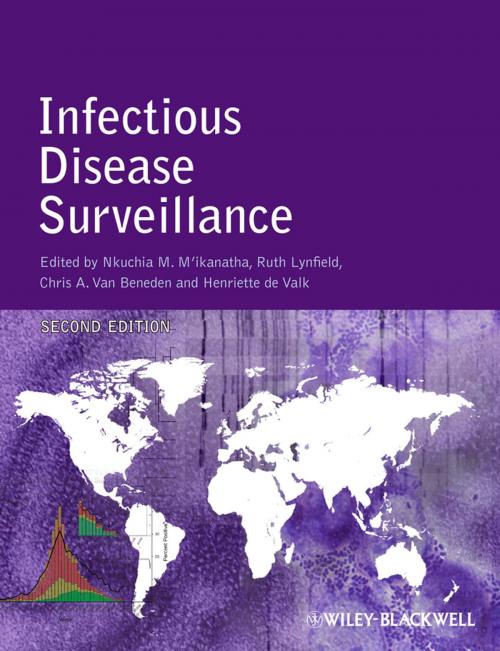Infectious Disease Surveillance
Nonfiction, Health & Well Being, Medical, Ailments & Diseases, Infectious Diseases, General| Author: | ISBN: | 9781118543528 | |
| Publisher: | Wiley | Publication: | March 11, 2013 |
| Imprint: | Wiley-Blackwell | Language: | English |
| Author: | |
| ISBN: | 9781118543528 |
| Publisher: | Wiley |
| Publication: | March 11, 2013 |
| Imprint: | Wiley-Blackwell |
| Language: | English |
This fully updated edition of Infectious Disease Surveillance is for frontline public health practitioners, epidemiologists, and clinical microbiologists who are engaged in communicable disease control. It is also a foundational text for trainees in public health, applied epidemiology, postgraduate medicine and nursing programs.
The second edition portrays both the conceptual framework and practical aspects of infectious disease surveillance. It is a comprehensive resource designed to improve the tracking of infectious diseases and to serve as a starting point in the development of new surveillance systems. Infectious Disease Surveillance includes over 45 chapters from over 100 contributors, and topics organized into six sections based on major themes.
Section One highlights the critical role surveillance plays in public health and it provides an overview of the current International Health Regulations (2005) in addition to successes and challenges in infectious disease eradication.
Section Two describes surveillance systems based on logical program areas such as foodborne illnesses, vector-borne diseases, sexually transmitted diseases, viral hepatitis healthcare and transplantation associated infections. Attention is devoted to programs for monitoring unexplained deaths, agents of bioterrorism, mass gatherings, and disease associated with international travel.
Sections Three and Four explore the uses of the Internet and wireless technologies to advance infectious disease surveillance in various settings with emphasis on best practices based on deployed systems. They also address molecular laboratory methods, and statistical and geospatial analysis, and evaluation of systems for early epidemic detection.
Sections Five and Six discuss legal and ethical considerations, communication strategies and applied epidemiology-training programs. The rest of the chapters offer public-private partnerships, as well lessons from the 2009-2010 H1N1 influenza pandemic and future directions for infectious disease surveillance.
This fully updated edition of Infectious Disease Surveillance is for frontline public health practitioners, epidemiologists, and clinical microbiologists who are engaged in communicable disease control. It is also a foundational text for trainees in public health, applied epidemiology, postgraduate medicine and nursing programs.
The second edition portrays both the conceptual framework and practical aspects of infectious disease surveillance. It is a comprehensive resource designed to improve the tracking of infectious diseases and to serve as a starting point in the development of new surveillance systems. Infectious Disease Surveillance includes over 45 chapters from over 100 contributors, and topics organized into six sections based on major themes.
Section One highlights the critical role surveillance plays in public health and it provides an overview of the current International Health Regulations (2005) in addition to successes and challenges in infectious disease eradication.
Section Two describes surveillance systems based on logical program areas such as foodborne illnesses, vector-borne diseases, sexually transmitted diseases, viral hepatitis healthcare and transplantation associated infections. Attention is devoted to programs for monitoring unexplained deaths, agents of bioterrorism, mass gatherings, and disease associated with international travel.
Sections Three and Four explore the uses of the Internet and wireless technologies to advance infectious disease surveillance in various settings with emphasis on best practices based on deployed systems. They also address molecular laboratory methods, and statistical and geospatial analysis, and evaluation of systems for early epidemic detection.
Sections Five and Six discuss legal and ethical considerations, communication strategies and applied epidemiology-training programs. The rest of the chapters offer public-private partnerships, as well lessons from the 2009-2010 H1N1 influenza pandemic and future directions for infectious disease surveillance.















